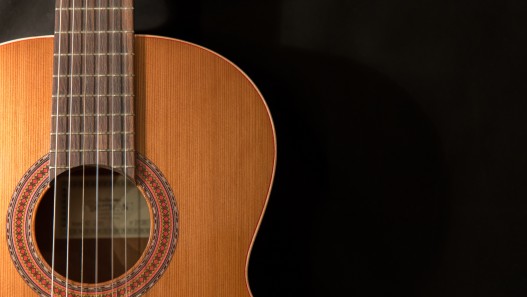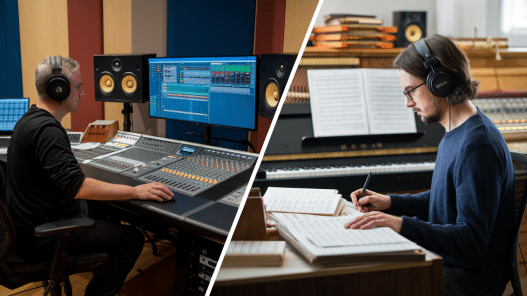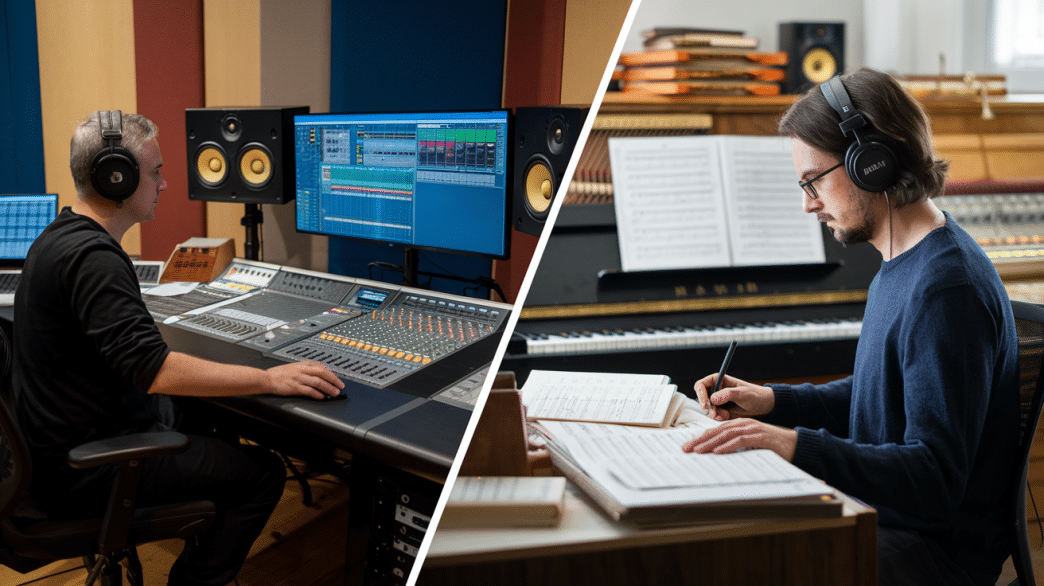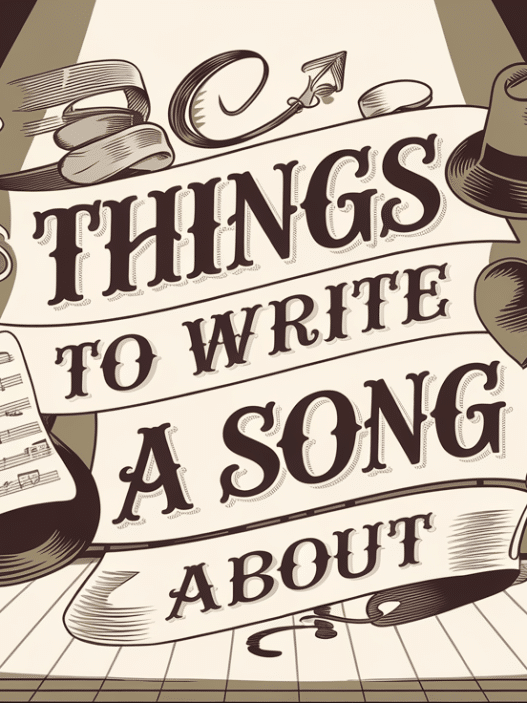Ever sat mesmerized by a perfect song and wondered who’s the true genius behind it?
The sleek production or the haunting melody?
The music industry has blurred the lines between composers and producers, creating confusion about who deserves the ultimate creative credit.
Behind every chart-topping hit stands two crucial forces—the composer who crafts the musical foundation and the producer who shapes its final form.
Their relationship defines modern music, yet most listeners can’t distinguish where composing ends and producing begins.
This creative tension has sparked debates, changed careers, and changed how music reaches your ears. Today, we pull back the curtain on this musical mystery.
Defining the Roles
Composer
The creative mind behind the musical framework and artistic foundation of a song.
Composers translate emotions and stories into structured musical language, often working before the recording process begins.
- Creates original melodies, chord progressions, and musical motifs.
- Develops arrangements, including instrumentation and vocal harmonies.
- Establishes the song’s emotional arc through musical dynamics and tonal shifts.
- Writes notation, scores, or musical guides for performers.
- Collaborates with lyricists to ensure musical and verbal elements align.
Producer
The technical and creative director who turns musical concepts into finished products.
Producers serve as both artistic visionaries and practical problem-solvers, bridging raw creativity and marketable sound.
- Selects and arranges studio musicians, engineers, and technical resources.
- Refines arrangements through editing, effects processing, and sound design.
- Makes critical decisions about mixing elements, sonic texture, and audio quality.
- Manages recording sessions and maintains project momentum.
- Interprets and enhances the composer’s vision while adding signature production elements.
Responsibilities and Skills
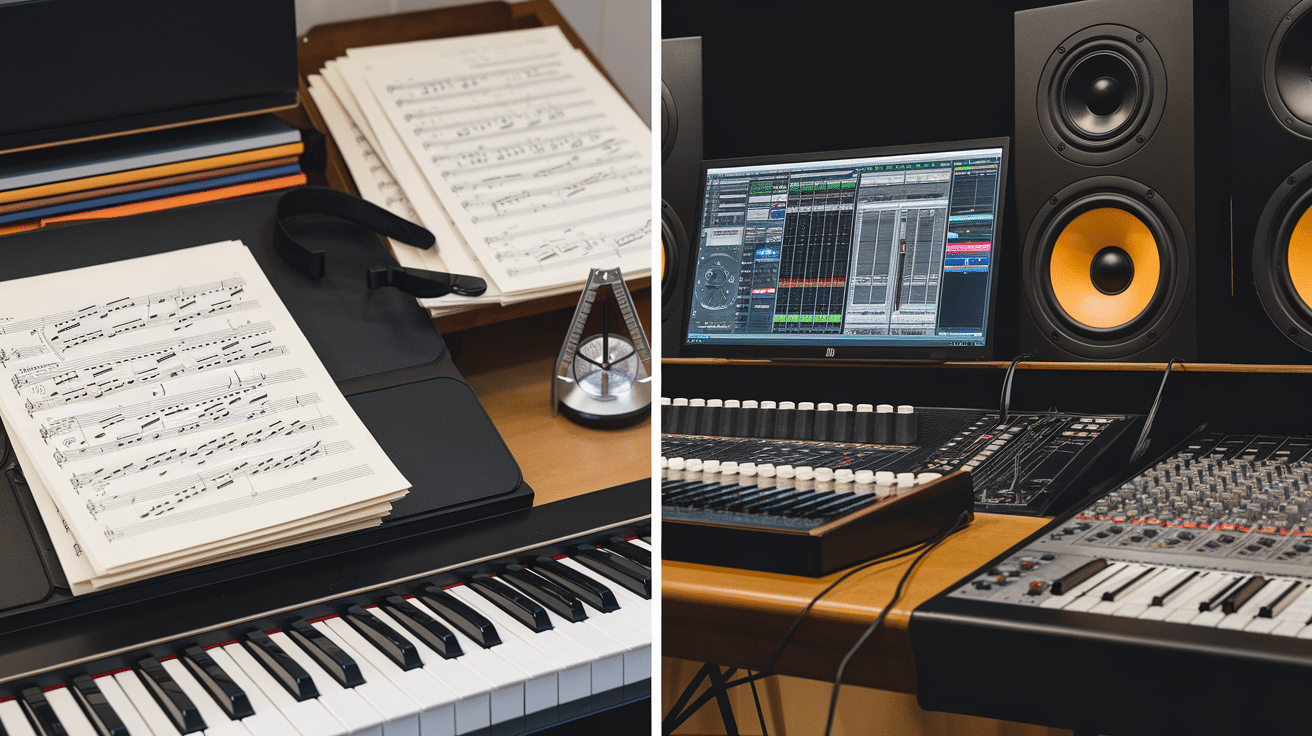
Composer
The composer turns abstract musical ideas into coherent frameworks through deep theoretical knowledge.
They communicate artistic intent through notation and structural clarity while maintaining a delicate balance between innovation and accessibility.
| Core Skill | Application | Example with Taylor Swift’s “All Too Well” |
|---|---|---|
| Music Theory | Applies harmonic principles to create emotional impact | Crafted the song’s descending chord pattern that evokes nostalgia |
| Arrangement | Orchestrates instruments to support the narrative | Designed the buildup from acoustic simplicity to orchestral climax |
| Collaboration | Works with performers to realize musical vision | Collaborated with co-writer Liz Rose to match lyrics to melodic flow |
Producer
The producer serves as both technical director and creative consultant, turning raw musical concepts into polished commercial products while preserving artistic integrity and meeting industry standards.
| Core Skill | Application | Example with Taylor Swift’s “All Too Well” |
|---|---|---|
| Technical Direction | Controls sonic elements and recording quality | Jack Antonoff shaped the 10-minute version’s dynamic range |
| Artist Development | Guides performance to capture optimal emotion | Coached vocal delivery to emphasize emotional high points |
| Project Management | Coordinates timeline, budget, and resources | Balanced studio time between instrumental layers and vocal takes |
Composer vs Producer: Key Distinctions
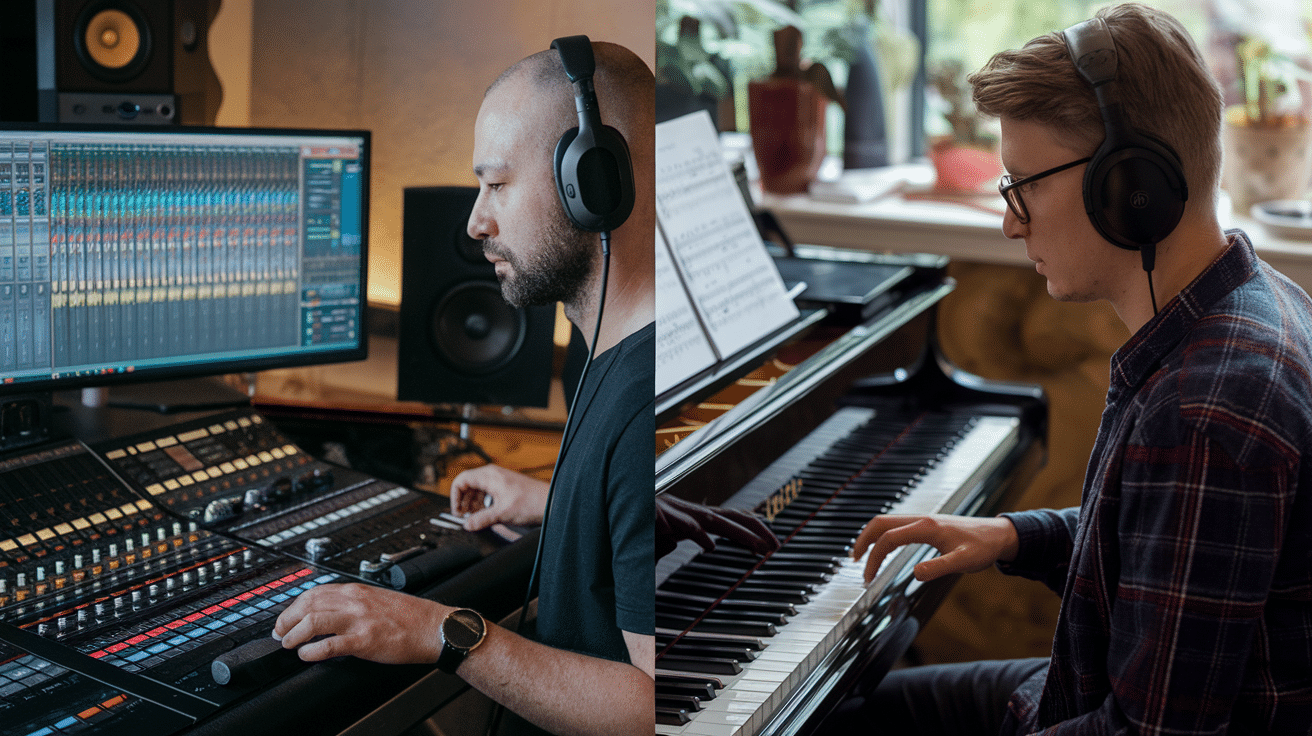
While both are vital to the music-making process, a composer and a producer play distinctly different roles—one crafts the musical blueprint, while the other brings it to life through creative direction and technical expertise.
| Aspect | Composer | Producer |
|---|---|---|
| Primary Focus | Musical structure and creative content | Sound quality and commercial viability |
| Typical Starting Point | Blank page or basic concept | Existing musical material or demos |
| Relationship to Time | Often works before recording begins | Primarily works during and after recording |
| Technical Requirements | Music theory, notation, arrangement | Audio engineering, mixing, digital production |
| Creative Authority | Melodic, harmonic, and rhythmic elements | Sonic texture, balance, and spatial elements |
| Historical Evolution | Role dates back centuries in formal music | Role emerged with recording technology |
| Financial Model | Often paid per composition or commission | Typically earns production fee or royalty percentage |
| Career Path | Formal musical education often beneficial | Often begins in engineering or performing |
| Technological Dependence | Can work with minimal technology | Requires significant technical resources |
Overlap and Collaboration
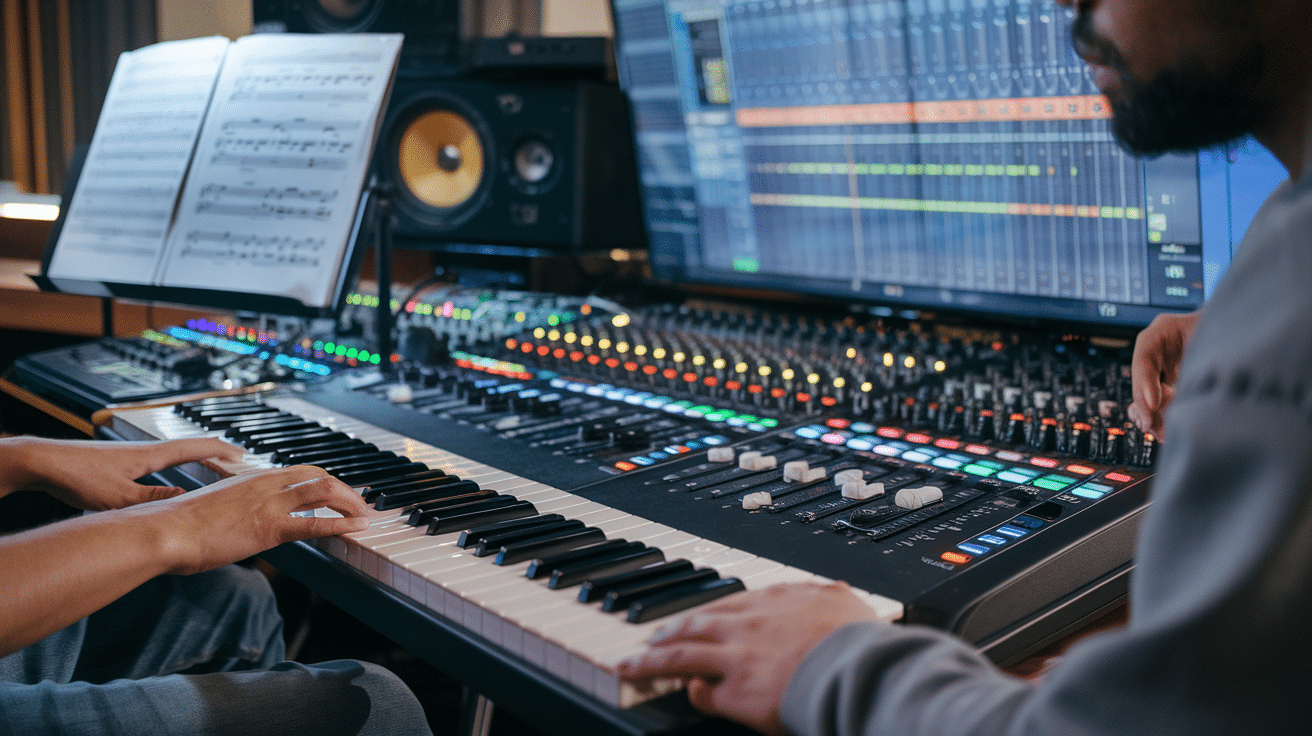
The relationship between composers and producers often transcends rigid boundaries, creating a dynamic partnership where creative and technical elements merge seamlessly.
When these roles overlap, music often achieves its most innovative and commercially successful forms.
In the studio’s collaborative atmosphere, composers and producers often operate as creative counterbalances, each pushing the other toward unexpected artistic territories.
This dynamic exchange transforms initial ideas into fully realized works where the line between composition and production becomes beautifully indistinct.
Multi-Hyphenate Music Makers
Many influential music creators embrace both roles by necessity or artistic choice:
-
Quincy Jones and Michael Jackson collaborated on “Thriller,” where Jones served as a traditional producer while contributing significant arrangement ideas that shaped the compositions themselves.
-
Ludwig Göransson bridges film composition and music production, scoring Black Panther and producing Childish Gambino’s Redbone, adding harmonic depth with his compositional expertise.
-
Finneas O’Connell works with Billie Eilish as both co-writer and producer, developing songs from bedroom demos to finished products without clearly delineating when composition ends and production begins.
-
Imogen Heap controls every aspect of her creative process, writing complex vocal arrangements while pioneering electronic production techniques that become inseparable from the compositions themselves.
The most powerful musical statements often emerge when creators reject strict role definitions and instead allow their compositional and production instincts to inform each other throughout the creative process.
Composer’s Influence
The composer’s creative decisions form the essential DNA of any musical work, establishing the elements that listeners connect with most deeply.
- Emotional Framework: Creates the melodic hooks and harmonic progressions that trigger emotional responses.
- Structural Integrity: Designs the song architecture, including verses, choruses, and bridges that guide the listening experience.
- Thematic Development: Establishes musical motifs and recurring elements that create cohesion.
- Artistic Direction: Sets the initial vision for how the music should feel and what it should communicate.
- Instrumental Choices: Determines which instruments and voices will bring the composition to life.
Producer’s Influence
The producer transforms raw compositional material into a polished sonic experience, often defining the record’s distinctive character.
- Sonic Texture: Turns basic chord progressions through special soundscapes like Brian Eno’s ambient production on Coldplay’s “Viva La Vida.”
- Spatial Treatment: Creates depth and dimension through reverb and panning as in Phil Spector’s “Wall of Sound” technique.
- Rhythmic Enhancement: Tightens or manipulates timing to create groove, exemplified in Rick Rubin’s work with Johnny Cash.
- Dynamic Control: Shapes volume relationships to heighten emotional impact, as in Max Martin’s production for pop artists.
- Sonic Identity: Establishes signature sounds that define artists and eras, like Timbaland’s distinctive beats for Justin Timberlake.
Final Thoughts
The composer versus producer dynamic isn’t just industry technicality—it’s the invisible force that shapes everything you hear.
While composers breathe life into musical ideas through notes and arrangements, producers amplify these visions into polished sonic experiences.
The truth is that modern music thrives in this creative partnership, where boundaries shift and talents merge.
The most groundbreaking music often emerges when both roles respect and enhance each other’s strengths.
What’s your take? Have you noticed the distinct fingerprints of composers and producers in your favorite songs?
Drop your thoughts in the comments and let’s continue this conversation about the true architects of the music we love.






